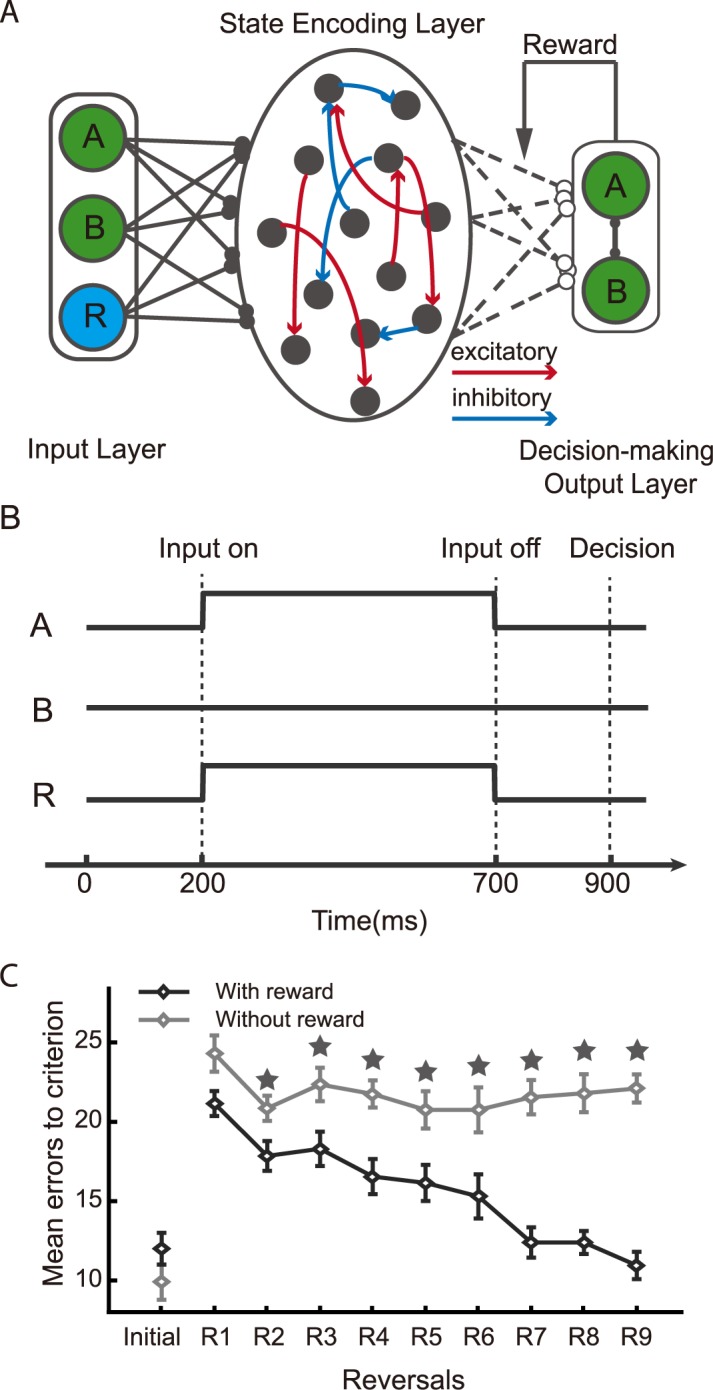Fig 1. Reversal learning task.

A. The schematic diagram of the model. The network is composed of three parts: input layer (IL), the state encoding layer (SEL) and the decision-making output layer (DML). B. The event sequence. The stimulus and reward inputs are given concurrently at 200 ms after the trial onset and last for 500 ms. After a 200 ms delay, the decision is computed with the neural activity at 900 ms after the trial onset. C. The number of the error trials made before the network achieves the performance threshold. The dark line indicates the performance of the network with the reward input; the light line indicates the performance of the network without the reward input as a model for animals of OFC lesions. Stars indicate significant difference (One-way ANOVA, p<0.05).
